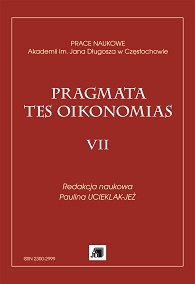Model flexicurity a elastyczne formy zatrudniania w krajach UE
The Flexicurity Model and Flexible Forms of Employment in the EU Member Countries
Author(s): Ewa Książek, Paulina Ucieklak-JeżSubject(s): Labor relations, EU-Approach / EU-Accession / EU-Development, Socio-Economic Research
Published by: Uniwersytet Jana Długosza w Częstochowie
Keywords: employment; atypical forms of employment; European Union; flexicurity model; flexible forms of employment;
Summary/Abstract: Vanishing stability in employment is dictated by globalisation, competition, economic crisis. The flexicurity model and flexible forms of employment are the reactions in the fight with unemployment in the member countries of the European Union. Abandoning the traditional model of employment by implementation of atypical forms of employment contributes to maintaining employment in the groups of people threatened with exclusion due to long-term unemployment. Applying an appropriate form of an atypical employment contributes to lowering costs of labour and better effectiveness in management of human resources in an organisation. Due to the flexible forms of employment, the work can be carried out in a more comfortable, non-standard way and cut the scale of layoffs at the time of crisis. The flexicurity model allows to maintain the maximum level of employment, which is one of the most important forms of contemporary joint social policy of the EU members countries
Journal: Prace Naukowe Akademii im. Jana Długosza w Częstochowie. Pragmata tes Oikonomias
- Issue Year: 2013
- Issue No: 7
- Page Range: 295-304
- Page Count: 10
- Language: English

